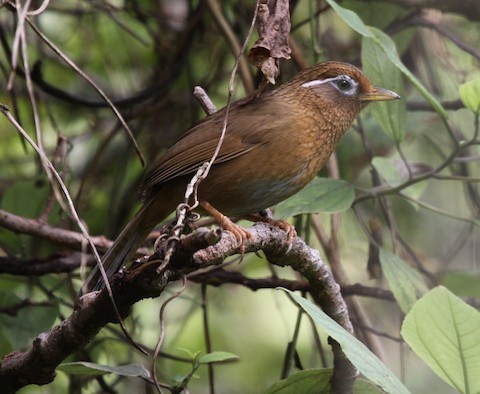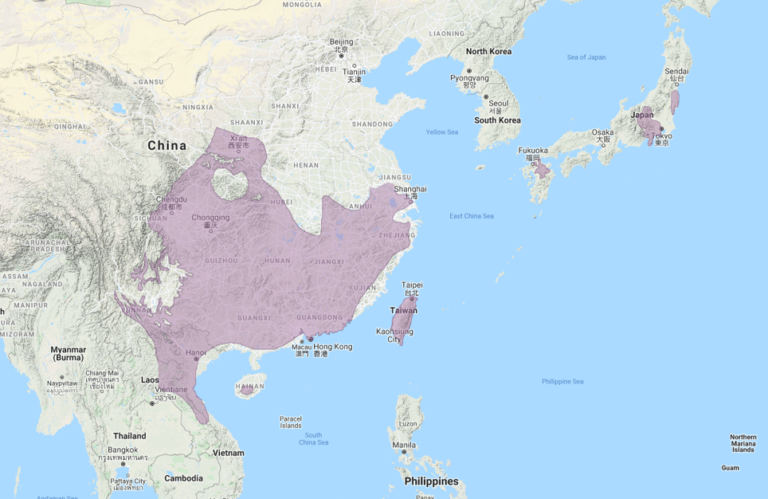Birdfinding.info ⇒ Generally regarded as common across much of its native range in eastern China (e.g., in parks around Shanghai and Hong Kong), despite capture of wild birds to be kept as pets. Also locally common where introduced populations exist on Taiwan, Honshu, and Hawaii—nearly throughout Kauai and the wettest parts of Maui (e.g., Ke’anae and Oheo Gulch in Haleakala National Park) and the Big Island (e.g., Pololu and Hawaii Volcanoes National Park).
Chinese Hwamei
Leucodioptron canorus
Family: Leiothrichidae
Eastern China to Vietnam; introduced elsewhere.
Inhabits forest undergrowth and brushy areas, from Shaanxi, Henan, and Jiangsu south to eastern Laos and central Vietnam. Also native to Hainan.
Introduced populations are well-established established on Honshu, Taiwan, and the five largest Hawaiian Islands: Kauai, Oahu, Molokai, Maui, and the Big Island. The Oahu population originated in the 1800s, but during the 2000s and 2010s it underwent a significant decline, and seems likely to disappear altogether.
A small population is more tenuously established in Singapore.
Identification
A medium-large, warm-brown laughingthrush with a prominent pale bluish-gray spectacle and brow-stripe.
The plumage is predominantly rusty or cinnamon shades of brown with fine, blackish streaks throughout the head, neck, and back.
A mid-belly patch is silvery-gray with dark streaks.
The bill and legs are mostly yellowish-orange.
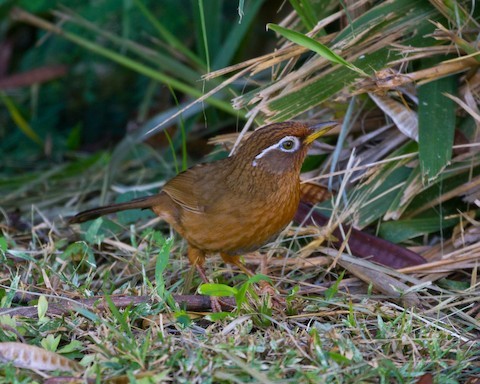
Chinese Hwamei. (Koloa, Kauai, Hawaii; November 28, 2011.) © Todd Dixon
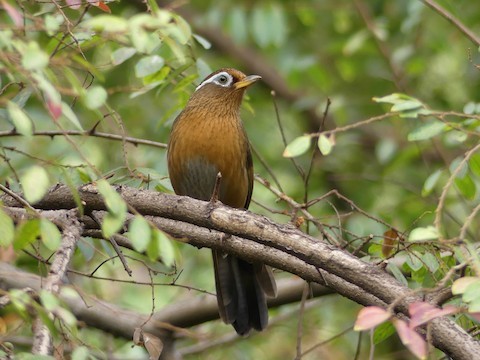
Chinese Hwamei, showing silvery-gray belly patch. (Guangdong, China.) © Shelley Rutkin
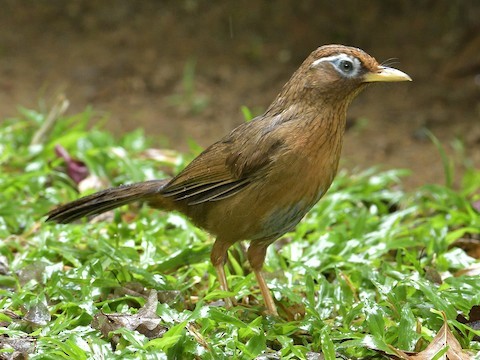
Chinese Hwamei, showing silvery-gray belly patch. (Toa Payoh Town Park, Singapore; February 21, 2020.) © Choong YT
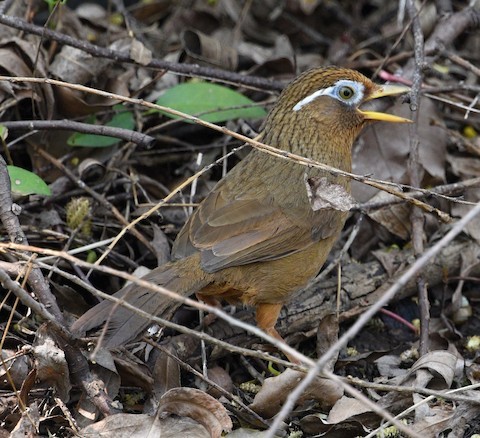
Chinese Hwamei, showing somewhat duller-than-average upperparts. (Shanghai, China.) © Kai Pflug
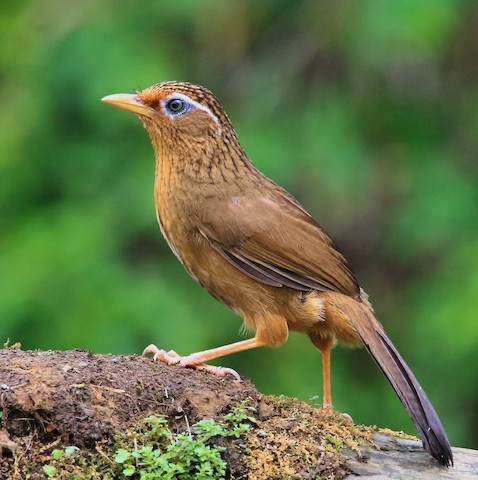
Chinese Hwamei. (Taipei, Taiwan; April 20, 2017.) © Poshien Chien
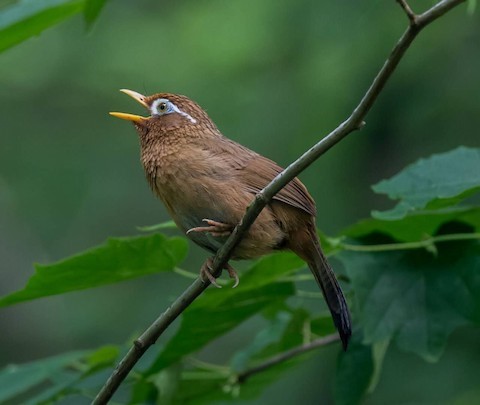
Chinese Hwamei, singing. (Zhejiang, China.) © Steven Bonta
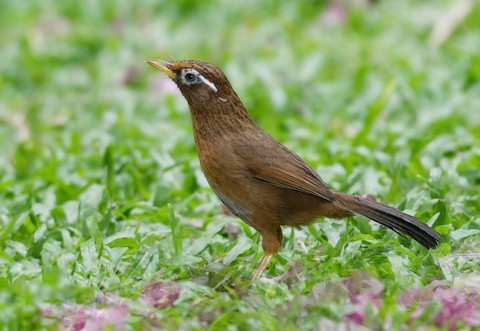
Chinese Hwamei. (Toa Payoh Town Park, Singapore; February 16, 2020.) © Norman Wu
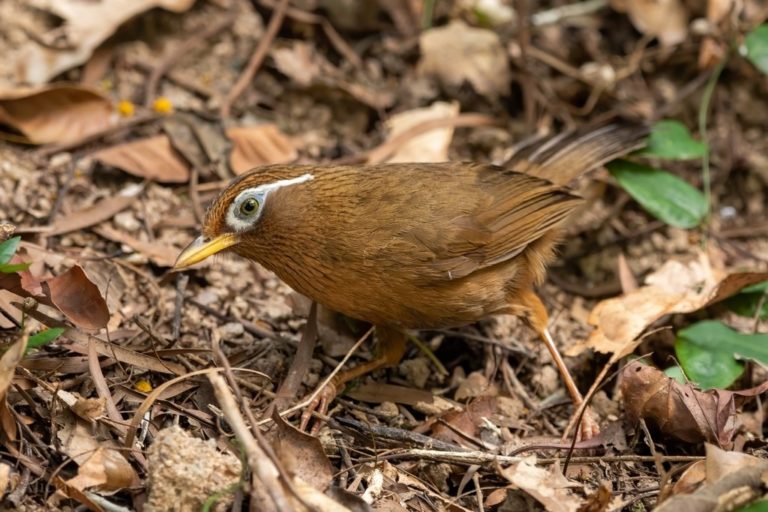
Chinese Hwamei. (Quarry Hill, Hong Kong; April 13, 2020.) © Alicia Ma

Chinese Hwamei. (Guangdong, China.) © Xiwen Chen
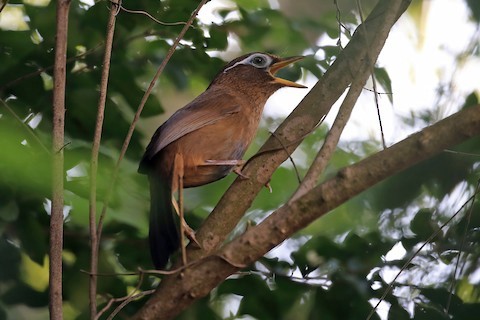
Chinese Hwamei, singing. (Hong Kong, China; November 15, 2019.) © Lo Chun Fai
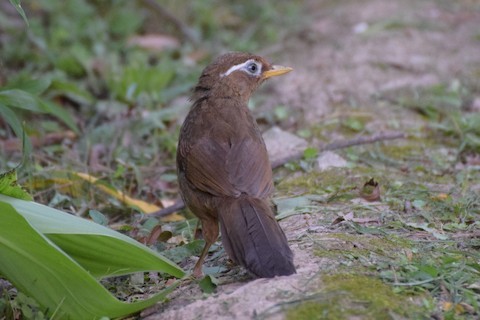
Chinese Hwamei, showing apparently uniform brown upperparts. (Shanghai, China.) © Andy Zhang
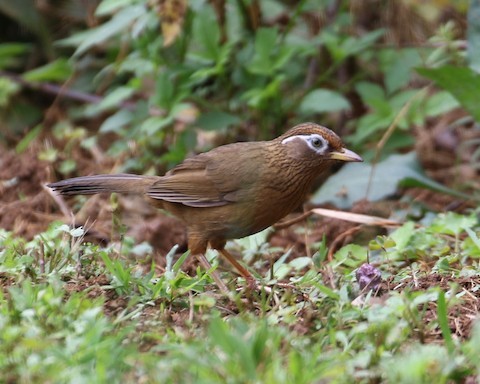
Chinese Hwamei. (Kauai Retreat Center, Kalihiwai, Kauai, Hawaii; March 20, 2017.) © Laurens Halsey
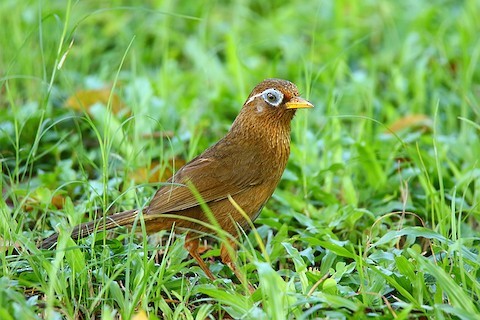
Chinese Hwamei. (Weiwuying Metropolitan Park, Kaohsiung, Taiwan; June 17, 2016.) © Roland Lo
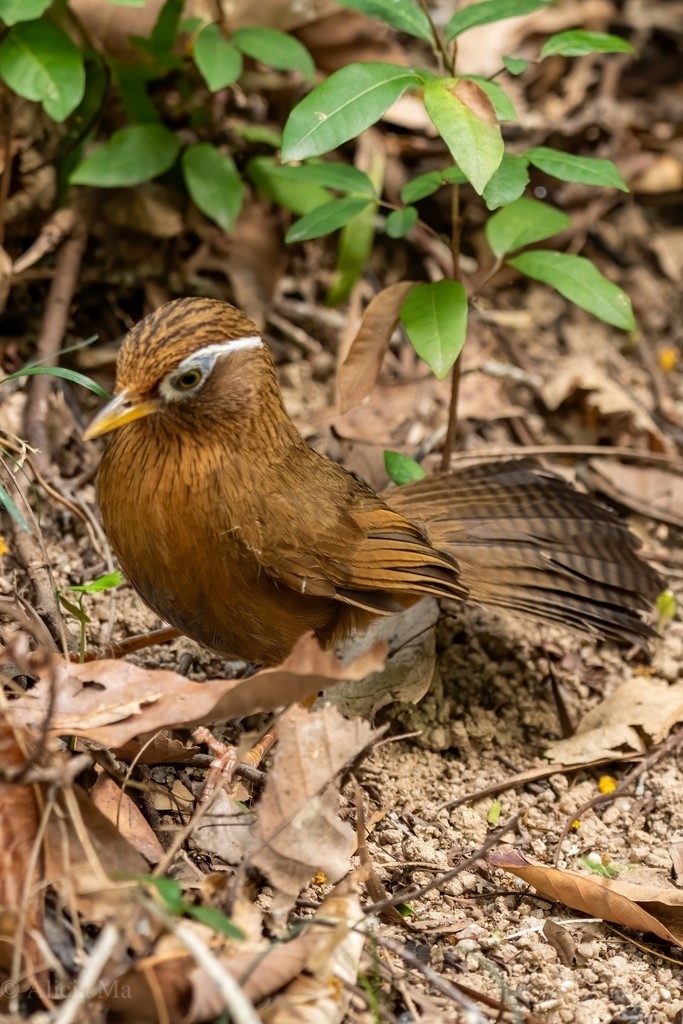
Chinese Hwamei, showing blackish streaks on crown and bars on tail. (Quarry Hill, Hong Kong; April 13, 2020.) © Alicia Ma
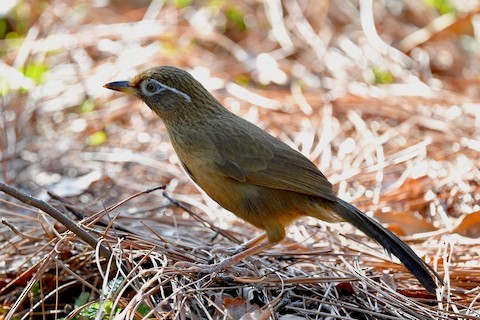
Chinese Hwamei, possibly an immature, showing blotchy irregular coloration—dull upperparts but bright underparts. (Zhongshanlin, Kinmen National Park, Kinmen County, Taiwan; December 14, 2019.) © Ting-Wei Hung

Chinese Hwamei. (Ohiki Road, Hanalei National Wildlife Refuge, Kauai, Hawaii; December 7, 2018.) © Charles Hundertmark
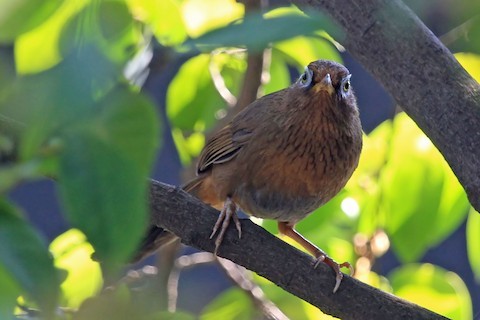
Chinese Hwamei, showing blackish streaks on throat and chest. (Jiangsu, China.) © Phillip Edwards
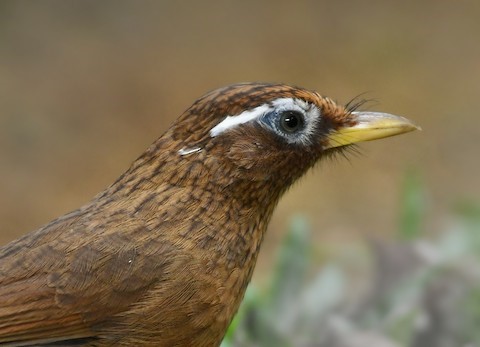
Chinese Hwamei, close-up view of pale bluish-gray spectacle and brow stripe. (Toa Payoh Town Park, Singapore; February 16, 2020.) © Norman Wu

Chinese Hwamei, showing silvery-gray belly patch. (Toa Payoh Town Park, Singapore; February 16, 2020.) © Norman Wu

Chinese Hwamei with prey. (Keokea Beach Road, Big Island, Hawaii; March 27, 2017.) © Sharif Uddin
Voice. Songs are variations on a theme: “four loud melodic whistles introduced by a mimicked phrase” (Brazil 2009): Wuyuan, Jiangxi, China; December 26, 2008, © Paul I. Holt
Cf. Taiwan Hwamei. Chinese and Taiwan Hwameis were traditionally considered a single species, although they are readily distinguishable by the presence or absence of a pale bluish-gray spectacle and brow-stripe. In addition to lacking this feature, Taiwan Hwamei is typically a colder shade of brown overall, but this varies somewhat. The introduced population of Chinese Hwamei on Taiwan hybridizes to some extent with the Taiwan Hwamei, and may have the potential to outcompete eliminate it.
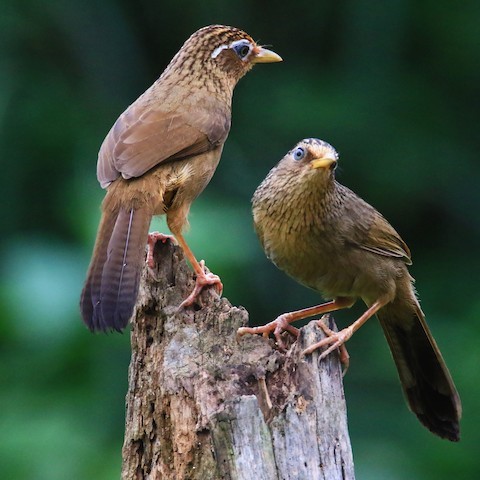
Chinese (left) and Taiwan Hwameis. (Taipei, Taiwan; April 20, 2017.) © Poshien Chien
Notes
Polytypic species consisting of two recognized subspecies. Formerly considered conspecific with the Taiwan Hwamei (L. taewanus).
References
BirdLife International. 2018. Garrulax canorus. The IUCN Red List of Threatened Species 2018: e.T22735076A132036519. https://dx.doi.org/10.2305/IUCN.UK.2018-2.RLTS.T22735076A132036519.en. (Accessed October 19, 2020.)
Brazil, M. 2009. Birds of East Asia. Princeton University Press.
eBird. 2020. eBird: An online database of bird distribution and abundance. Cornell Lab of Ornithology, Ithaca, N.Y. http://www.ebird.org. (Accessed October 19, 2020.)
Michigan State University. 2020. AVoCet: Avian Vocalizations Center. https://avocet.integrativebiology.natsci.msu.edu/. (Accessed October 19, 2020.)
Pratt, H.D., P.L. Bruner, and D.G. Berrett. 1987. A Field Guide to the Birds of Hawaii and the Tropical Pacific. Princeton University Press.
Pyle, R.L., and P. Pyle. 2017. The Birds of the Hawaiian Islands: Occurrence, History, Distribution, and Status. Version 2 (January 1, 2017). http://hbs.bishopmuseum.org/birds/rlp-monograph/. B.P. Bishop Museum, Honolulu, Hawaii.
Xeno-Canto. 2020. Chinese Hwamei – Garrulax canorus. https://www.xeno-canto.org/species/Garrulax-canorus. (Accessed October 19, 2020.)
